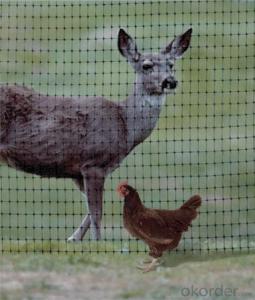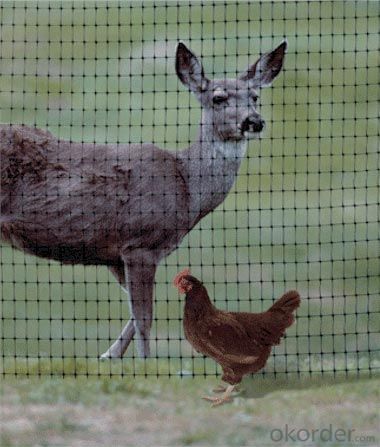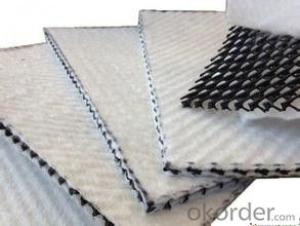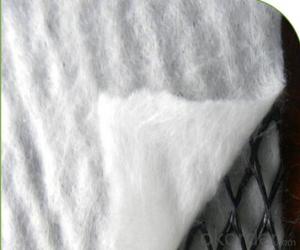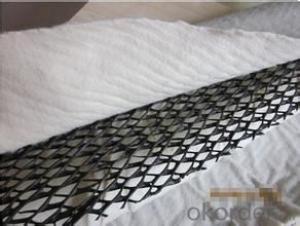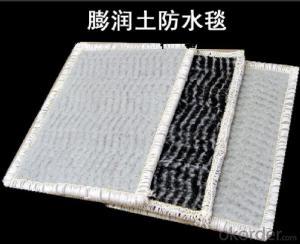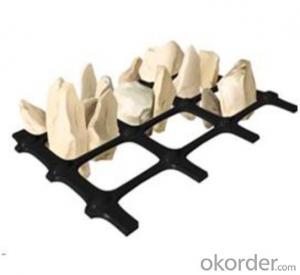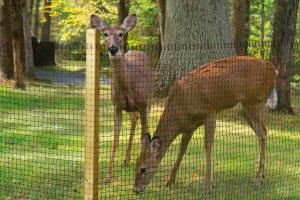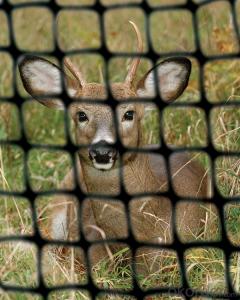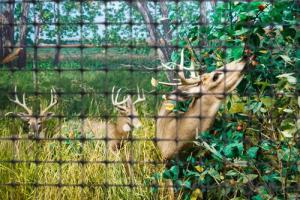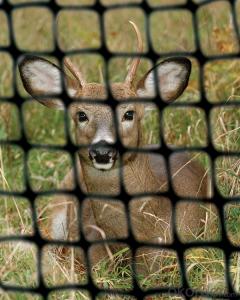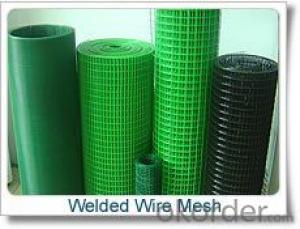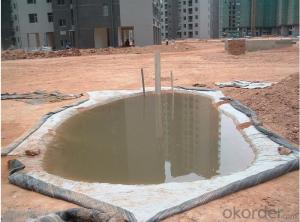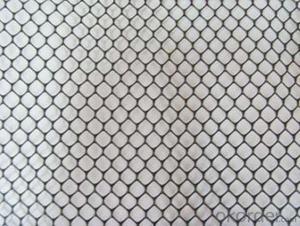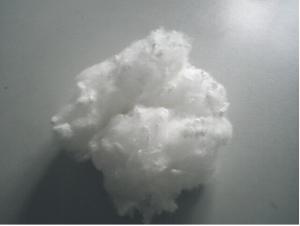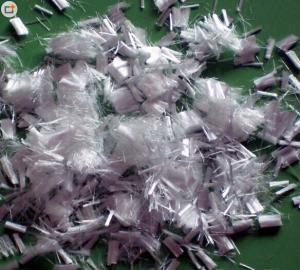PP Plastic/ Deer Netting for Animals with Virgin Material
- Loading Port:
- China main port
- Payment Terms:
- TT OR LC
- Min Order Qty:
- 5000 m²
- Supply Capability:
- 1000000 m²/month
OKorder Service Pledge
OKorder Financial Service
You Might Also Like
Plastic netting plastic mesh breeding mesh
Plastic Plain Netting
Colour:white,black,blue and green
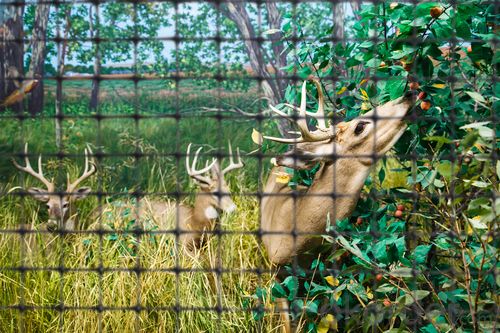
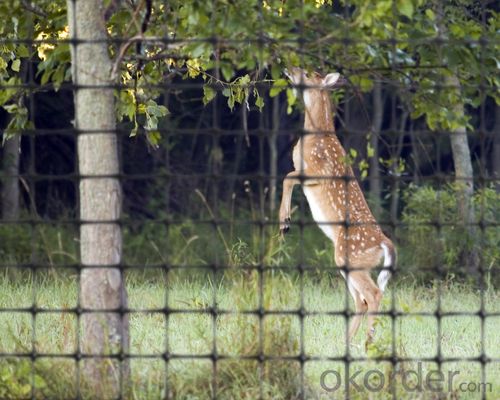

Deer fence introduction:
Deer fencing is a very high strength, lightweight, 3.6ft to 7.3ft high deer fence manufactured from high strength polypropylene BOP plastic netting. Deer have a tendency to forage over large areas and the cost effective deer fencing offers a very effective deer control barrier.
The deer fence is black, UV stabilised and rot proof and unobtrusive as it merges into it's background. Deer fencing is very quick and easy to erect and each roll weighs less than 15kg. The Deer Netting should be installed by battening to the fencing posts to ensure the mesh filaments are not damaged.
Features of the deer neeting fence:
Deer fence is easy to erect and install
Plastic netting has a mesh hole size of 0.06" ,0.08",0.18",0.19"
The BOP plastic netting has a high tensile strength
Plastic mesh is UV stabilized and chemical resistant
Deer fencing rolls are lightweight
Deer fencing is a very high strength, lightweight 1.8m high Deer fence manufactured from polypropylene.
Deer fencing net is supplied on a 100m long roll
Features:
1. Low cost, while has superior strength
2. Has anti-tearing and friction capability
3. Wide range of product availability, some other mesh sizes and weights can also produced as per customers' requirements.
Package/Payment/Delivery:
Package: Usually packed by rolls in plastic film bags with labels inside and then loosely loaded in the container
FAQ:
Q1: What is your minimum order quantity?
A:The minimum order quantity is 5000 ,but it is negotiable.
Q2:What is your payment terms?
A: T/T,Western Union,Paypal,L/C...
Q3:What is your delivery time?
A:Production time usually costs 2-20 days.
Waiting to cooperate with you!
- Q: Are there any specific earthwork products available for railway embankment reinforcement?
- Yes, there are specific earthwork products available for railway embankment reinforcement. These products are designed to provide stability and enhance the load-bearing capacity of railway embankments. They include geosynthetic materials such as geotextiles, geogrids, and geocells, which are used to reinforce the soil and prevent erosion. Additionally, other products like gabions and retaining walls can also be used for embankment reinforcement in railway projects.
- Q: How do geosynthetic liners prevent contamination in waste containment facilities?
- Geosynthetic liners act as a barrier to prevent the migration of contaminants from waste containment facilities into the surrounding environment. These liners are designed to be impermeable, effectively preventing the leaching of hazardous chemicals, pollutants, or pathogens into the soil, groundwater, or nearby water bodies. By creating a sealed and secure environment, geosynthetic liners ensure that potential contaminants remain confined within the waste containment facility, minimizing the risk of contamination and protecting the surrounding ecosystems and human health.
- Q: What are the advantages of using geotextile tubes for riverbank protection?
- Geotextile tubes offer several advantages for riverbank protection. Firstly, they provide excellent erosion control by preventing soil loss and stabilizing the riverbank. Secondly, they are cost-effective compared to traditional methods such as riprap or concrete structures. Additionally, geotextile tubes are easy to install, maintain, and remove if necessary. They also promote vegetation growth, allowing for a more natural and visually appealing riverbank. Lastly, these tubes can be customized to fit the specific needs of the site, making them highly adaptable for various riverbank protection projects.
- Q: Can corrugated metal pipes be used as culverts?
- Yes, corrugated metal pipes can be used as culverts. They are commonly used due to their durability, strength, and cost-effectiveness. Corrugated metal pipes provide efficient water flow and are suitable for various applications, including culverts for roads, railways, and stormwater management systems.
- Q: How do earthwork products contribute to sediment control in water bodies?
- Earthwork products, such as erosion control blankets, sediment barriers, and silt fences, play a crucial role in sediment control in water bodies. These products are designed to prevent soil erosion and the subsequent transport of sediments into nearby waterways. By stabilizing the soil and reducing runoff, earthwork products effectively minimize sediment pollution in water bodies, protecting aquatic ecosystems and promoting water quality.
- Q: How do geogrids aid in reinforcement of retaining walls in earthwork projects?
- Geogrids aid in the reinforcement of retaining walls in earthwork projects by providing additional strength and stability to the structure. They are typically made from high-strength materials such as polyester or polypropylene, and are placed within the soil layers to distribute the load more evenly. This helps to prevent the soil from sliding or collapsing, increasing the overall stability and longevity of the retaining wall.
- Q: What are the different colors available for earthwork products?
- The different colors available for earthwork products typically depend on the type of material used. Common colors include earth tones such as brown, tan, and gray. However, some manufacturers may offer a wider range of colors to suit specific design preferences.
- Q: What are the three mechanics of civil engineering?
- Main structure materials mechanics, structural mechanics, fluid mechanics, soil mechanics, building materials, concrete structure and steel structure, housing structure, bridge structure, underground structure, road survey design and roadbed structure, construction technology and management.
- Q: Are earthwork products suitable for commercial construction projects?
- Yes, earthwork products are suitable for commercial construction projects. Earthwork products, such as gravel, sand, and soil, are commonly used in various stages of commercial construction projects. They can be used for site preparation, foundation construction, road and parking lot building, landscaping, and drainage systems. These materials provide stability, support, and proper foundation for commercial structures, making them essential components in commercial construction projects.
- Q: How do earthwork products help with shoreline stabilization?
- Earthwork products help with shoreline stabilization by providing a durable and effective solution to prevent erosion and maintain the integrity of the shoreline. These products, such as geotextiles, geogrids, and gabion baskets, act as barriers against wave action and currents, reducing their impact on the shoreline. They also promote vegetation growth and provide stability to the soil, preventing soil erosion and maintaining the natural balance of the shoreline ecosystem. Overall, earthwork products offer an efficient and sustainable method for shoreline stabilization.
Send your message to us
PP Plastic/ Deer Netting for Animals with Virgin Material
- Loading Port:
- China main port
- Payment Terms:
- TT OR LC
- Min Order Qty:
- 5000 m²
- Supply Capability:
- 1000000 m²/month
OKorder Service Pledge
OKorder Financial Service
Similar products
Hot products
Hot Searches
Related keywords
